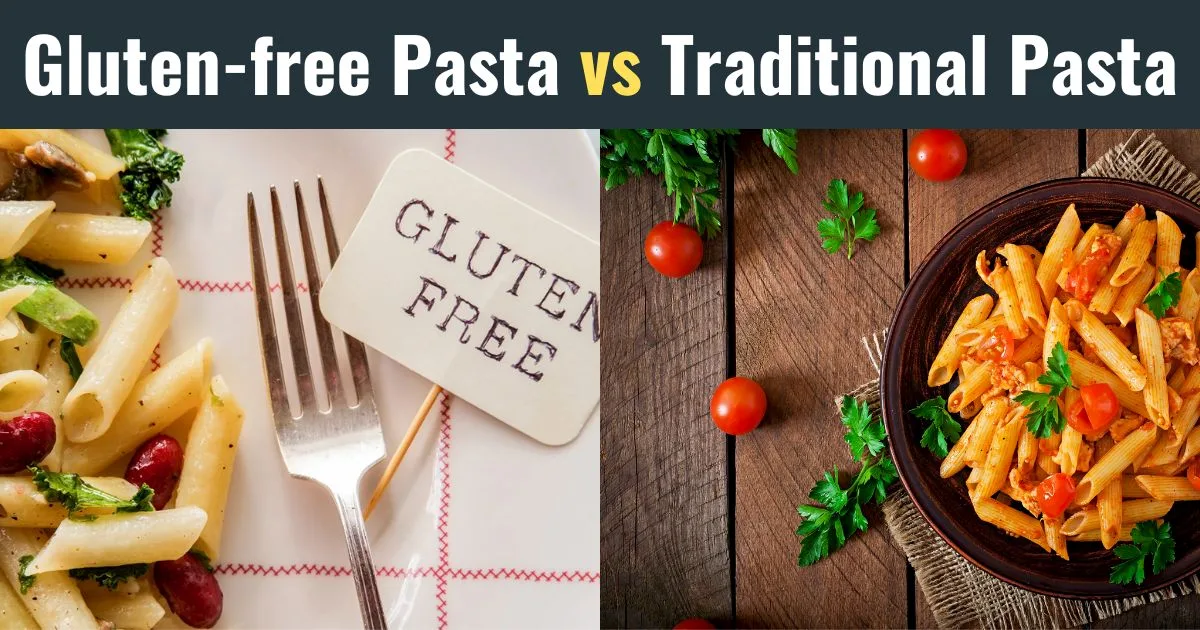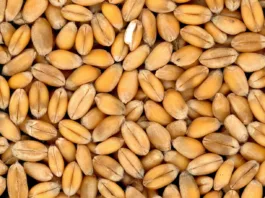Gluten is a most common protein in wheat plants, barley and rye. It acts as a binding agent which binds the processed food together and gives it shape. Food items made of these grains, such as breads, pasta, cereals have gluten. Typically, undigested gluten reaches the small intestine, and most individuals can tolerate this gluten. However, some individuals can generate autoimmune response, known as the celiac disease. In some individuals without celiac disease, bloating, diarrhea, or rashes develop on the skin. So, is gluten bad for health⋮ Not really. It is not bad for healthy individuals who can digest it.
In recent years, there has been an extraordinary surge in demand for gluten-free products, and gluten-free pasta specifically has become extremely popular, not only among celiac or gluten-intolerant patients but even among healthy individuals as a healthier alternative to normal pasta and as a step toward eating healthier. Regular pasta has been produced from durum wheat flour and water for quite a long period of time. Individuals have acquired a taste that anticipates and delights in this flavour.
Rice flour, corn flour, quinoa flour, potato flour and legume flour (lentil, chickpea, pea) are some of the common ingredients used for making gluten-free pasta. They are the primary ingredients and provide pasta with its form. To add to a firmer texture, egg and xanthan gum are also used in some varieties. Let’s delve into this article by Pristine Market Insights that points out the nutritional, taste and texture differences between traditional pasta and gluten-free pasta.
Comparing the Taste and Texture
Zero-gluten pasta, according to most, tastes nearly or relatively equal to regular wheat pasta with some minute differences in flavour. Gluten-free pasta contains a range of ingredients, and hence, taste, flavours, and texture differ accordingly. Rice-based pasta is very much alike normal pasta with a neutral, mild taste, with a softer and delicate texture. Corn-based products have a slight sweet tinge with a corn-like taste. They are gritty and have less smoothness in their texture.
But pastas made from beans or lentils have a peculiar, strong taste. They contain an unusual but not unpleasant, earthy and nutty taste and are firm to the bite and give a nice chewiness. Quinoa or chickpea pastas that are rich in protein content have a nutty, wheat-like taste and are fairly firm but softer than wheat pasta. Quinoa or chickpea pastas with high protein content contain a nutty, wheat-like flavour and are relatively firm but less hard compared to wheat pasta.
Zero-gluten pasta will become soft due to the lack of gluten in it, as gluten is responsible for providing structure and texture during cooking. Without the gluten, it is prone to absorbing too much water quickly and, if cooked for too long, becomes mushy. To enhance texture, undercook slightly and add veggies or cheese to mix in and add texture. Balance out the earthy, nutty, or gritty flavour and texture by using innovative sauces and mix-ins. Blended flour pasta will provide a more balanced flavour and texture.
Comparative Analysis on Nutritional Content
The ingredients used to make gluten-free pasta determine the nutritional content. Checking the base ingredient is a primary task to ensure safe consumption. The main ingredient helps in determining the nutritional content of the dish, along with the taste and texture of the cooked food. For comparison purposes, we have selected dry, corn-based gluten-free pasta and traditional 100% durum wheat semolina pasta.
Durum wheat pasta is high in protein content because of high gluten. Some gluten-free pastas mainly made from legumes like chickpeas and lentils, have more protein content than traditional pasta. But the ones made from rice or corn have lower protein content. Carbohydrate content does not vary significantly in gluten-free as well as in traditional pastas, as both are mainly carbohydrate-based. The enriched durum wheat pasta enriched with crucial minerals like calcium and iron. While, corn-based gluten-free pasta is notably higher in fiber as compare to durum wheat pasta, giving a long-lasting fullness.
Micronutrients such as vitamins (thiamine, niacin and riboflavin) and minerals such as calcium and iron are more found in durum wheat pasta. According to a study by PubMed, rice and corn-based pasta spikes sugar levels of the blood compared to wheat pasta, indicating a higher glycemic index. But pasta made from legumes and quinoa has a lower glycemic index, giving more stable blood glucose levels.
Individuals with gluten intolerance can opt for corn-based or legume-based pasta, as it serves the purpose and offers a good amount of fiber and protein (in case of legume-based pasta), but falls short on several other essential nutrients compared to wheat pasta. Durum wheat semolina pasta is seemingly a nutrient-dense option for those who are gluten-tolerant. The following table illustrates the nutrient comparison between whole wheat pasta and corn-based gluten-free pasta:
| Nutrients | 100% Durum Wheat Pasta (100g) | Corn-based Gluten-free Pasta (100g) |
|---|---|---|
| Calories | 357 kcal | 357 kcal |
| Vitamin C | 0 mg | 0 mg |
| Cholesterol | 0 mg | 0 mg |
| Saturated Fatty Acids | 0 g | 0.29 g |
| Fatty Acids, total trans | 0 g | 0 g |
| Protein | 12.50 g | 7.46 g |
| Carbohydrates | 75 g | 79.26 |
| Fiber | 3.6 g | 11 g |
| Fats | 1.79 g | 2.08 g |
| Vitamins | ||
| Thiamine | 1 mg | 0.23 mg |
| Riboflavin | 0.46 mg | 0.09 mg |
| Niacin | 7.14 mg | 2.43 mg |
| Minerals | ||
| Calcium | 36 mg | 4 mg |
| Iron | 3.21 mg | 0.93 mg |
Conclusion
There is a reasonable amount of protein in regular pasta, which is wheat-based. It also has a good amount of necessary nutrients such as Vitamin B and iron. The flavour and texture of durum wheat pasta complement the sauces. The taste and texture of durum wheat pasta goes well with the sauces. People with celiac disease or gluten sensitivity now have a good and healthy alternative to traditional pasta, as numerous brands are coming up in the gluten-free pasta market that are very similar to traditional pasta. Gluten-free pasta isn’t healthier than traditional pasta, but some varieties contain higher nutritional values for fiber and protein.




